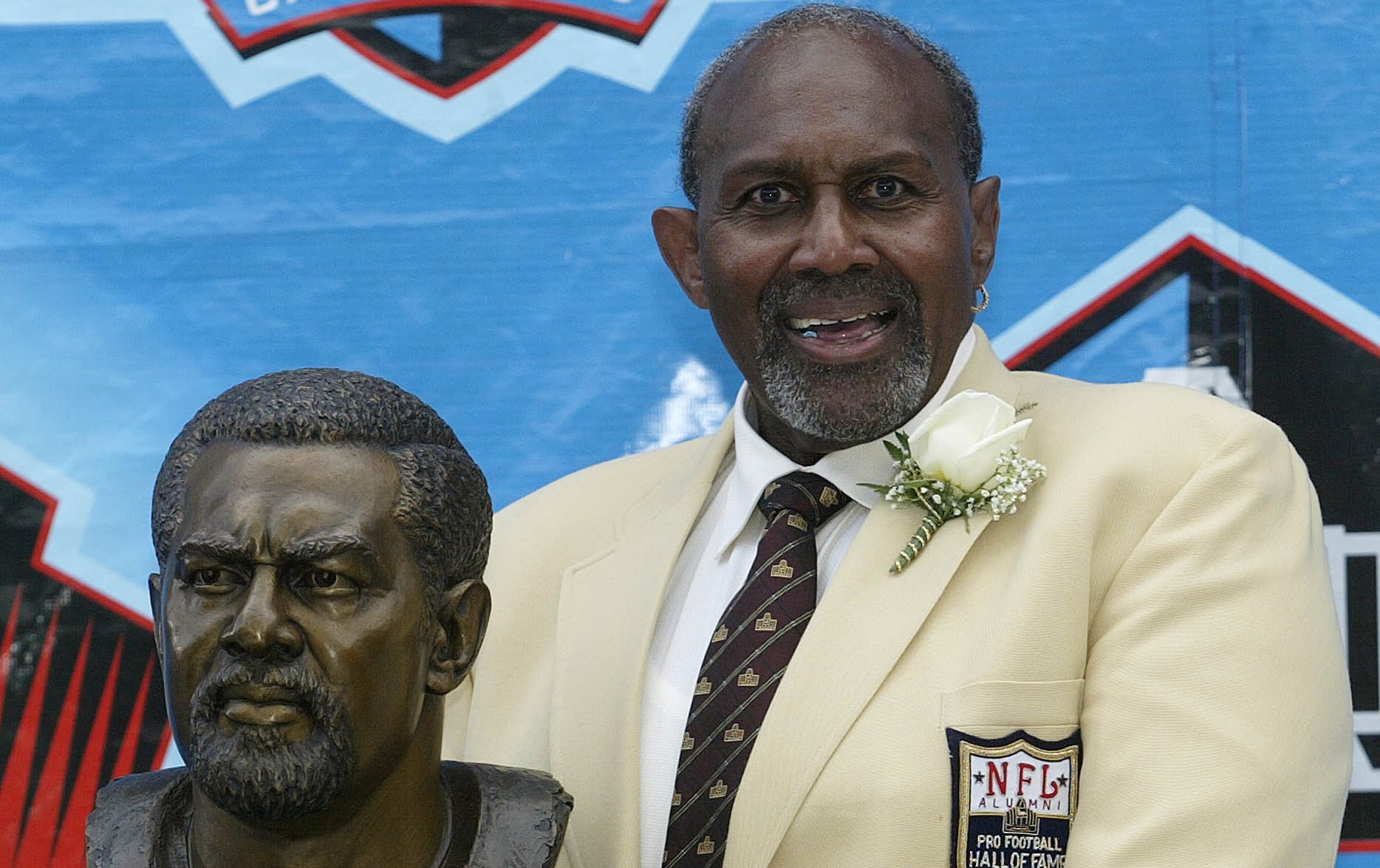Gold Jacket Spotlight: 'Iron Man' Bob Brown

Iron sharpens iron.
Bob “Boomer” Brown already was a three-time All-Pro and three-time Pro Bowl selection in five seasons with the Philadelphia Eagles when he asked for – and received – a trade following the 1968 season.
“I’m so ecstatic, I can hardly describe my feelings,” he said upon learning he had been dealt to the Los Angeles Rams as part of a five-player deal.
Opponents, already respectful of his immense talent, didn’t share that enthusiasm, as Boomer – the featured Hall of Famer in this week’s Gold Jacket Spotlight – was about the learn additional tricks of the trade from one of the game’s most famous and skilled defensive lines, the Fearsome Foursome.
“I had the opportunity to work every day against the best defensive end in football,” he said of Deacon Jones, who was credited with 173.5 sacks in his Hall of Fame career. “We had some battles in practice. That’s when the one-on-one was part of the daily routine. It was always a challenge, and it was always a good street fight.”
Boomer, a rare combination of speed and brute strength, polished his street fighting techniques even further in those daily few-holds-barred showdowns under the watchful eye of Hall of Fame coach George Allen. The result: 28 consecutive starts, two more All-Pro seasons and 20 wins with the Rams. In 1969, the Rams allowed a league-low 17 sacks in 416 pass attempts.
“Bob Brown had a cold-blooded mentality,” Jones said. “He’d kill a mosquito with an axe.”
Boomer said any conversation about greatest defensive ends started and ended with Jones’ name. He also mentioned Hall of Famers Carl Eller and Claude Humphrey and Pittsburgh’s L.C. Greenwood as his toughest opponents. In his 2004 Enshrinement speech, Boomer called Greenwood “one of the best of the best” and made a plea for him to receive his own Bronzed Bust.
One afternoon, however, Greenwood was no match for Brown, to the point teammate Mean Joe Greene offered to slide outside and send L.C. inside. That strategy lasted exactly one play.
“When I lined up in front of Bob and I looked in his face and that helmet, all I could see was his eyes,” Greene recalled in an interview with NFL Films. “I said, ‘Oh, my goodness. This doesn’t look good at all.’”
“The look in that helmet was intimidating and very fearful, and all I remember is getting up after the play was over and looking through my ear hole of my helmet. And one shoe was off. I told L.C., ‘Hey, you got him. You got him back.’”
Boomer reveled in winning every one-on-one those battle.
“I didn’t try to finesse guys; I just tried to beat up on them for 60 minutes.”
He did it with pure power – his God-given size and strength enhanced with a near-lifelong weightlifting regimen that separated him from most other players of his era.
“I felt a lot of guys in the NFL weren’t lifting,” Boomer told one interviewer. “It put me one-up on them. It did not affect my quickness or my speed.”
In a 10-year career cut short by a knee injury, Brown also played in Oakland. He appeared in 126 games, starting 124, and was elected as a member of the NFL’s All-Decade Team of the 1960s.
In a Power of Sports biography, Boomer said he played with one philosophy: “Be the hammer, never the nail. Attack, and attack relentlessly.”
Like a blacksmith, he wielded his arms like mighty sledgehammers. He pumped iron, forged iron and sharpened iron.
And turned it into bronze.
Edgerrin James Selects Colts Owner Jim Irsay as Presenter
James will be enshrined as a part of the Centennial Class of 2020.
Peyton Manning Chooses Father Archie Manning as Presenter
The enshrinement of the Class of 2021 will be held August 8.